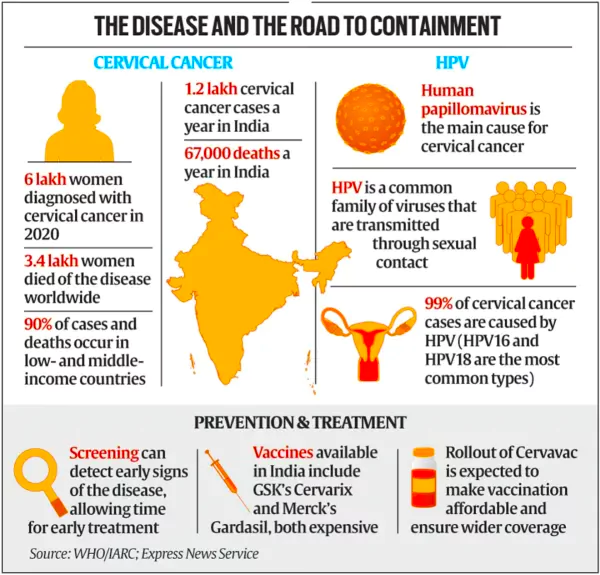Cervical Cancer Awareness: Key to Prevention and Early Detection
What is Cervical Cancer?
Cervical cancer happens when cells change in the cervix, which connects the uterus and vagina. There are two types of cells on the surface of the cervix, squamous and columnar (gland cells). Most cervical cancers are from squamous cells.
Cervical cancer usually develops slowly. It starts as a precancerous condition called dysplasia. This condition can be detected by a Pap test and is nearly 100% treatable. It can take years for dysplasia to develop into cervical cancer. Most women who are diagnosed with cervical cancer today have not had regular Pap tests, or they have not followed up on abnormal Pap test results.
Those with female anatomy aged 35-44 are most likely to get it.
Causes of Cervical Cancer
The primary cause of cervical cancer is persistent infection with high-risk types of human papillomavirus (HPV). HPV is a common sexually transmitted infection, with specific strains such as HPV 16 and 18 being responsible for the majority of cervical cancer cases.
Most people will get HPV at some point in their lives and not realize it because their bodies fight the infection. However, if your body doesn't fight the infection, it can cause the cells of your cervix to change to cancerous cells.
Cervical Cancer Risk Factors
You might be at higher risk of cervical cancer if you:
- Started intercourse before age 18 or within a year of starting your period
- Have multiple sexual partners, which increases exposure to HPV
- Take birth control pills, especially for longer than 5 years
- Smoke cigarettes
- Have a weakened immune system, so your body is less able to fight infections
- Have a sexually transmitted disease (STD)
- Haven't been vaccinated against HPV
- Have had three or more pregnancies
- Were exposed in the womb to DES(diethylstilbestrol) , a drug given to some women between 1948 and 1971 to prevent miscarriage; a rare risk factor
- Are obese, which may make it harder to diagnose cervical cancer
- Have low income or are without medical insurance, which means you may not be screened for cervical cancer
Symptoms of Cervical Cancer
- unusual bleeding, like in between periods, after sex, or after menopause
- vaginal discharge that looks or smells different than usual
- pain in the pelvis
- needing to urinate more often
- pain during urination
- pain during intercourse
- weight loss
- fatigue
- loss of appetite
Cervical Cancer Stages
Cervical Cancer Treatments
- Surgery: Removal of the cancerous tissue, which can include a hysterectomy (removal of the uterus) or trachelectomy (removal of the cervix but not the uterus).
- Radiation Therapy: Using high-energy rays to target and kill cancer cells.
- Chemotherapy: Using drugs to kill cancer cells, often used in combination with radiation therapy.
- Targeted Therapy: Drugs that target specific aspects of cancer cells, like bevacizumab, which inhibits blood vessel growth in tumors.
- Immunotherapy: Using the body’s immune system to fight cancer
Prevention
- Get the HPV vaccine. The vaccine prevents most types of HPV infection that cause cervical cancer. The HPV vaccine is approved for children and adults ages 9 to 45 and protects against the development of cervical cancer. The vaccine works by triggering your body's immune system to attack certain human papillomavirus (HPV) types, which have been linked to many cases of cervical cancer. It is best to get the vaccine before the start of sexual activity. The vaccine is given in a series. The number of shots you need varies depending on the age you are at your first dose. Check with your healthcare provider to see if you're eligible for the vaccine.
- Practice safer intercourse. Using condoms during sex reduces the risk for HPV and other sexually transmitted infections (STIs).
- Limit the number of sexual partners you have. Avoid partners who are active in high-risk sexual behaviors.
- Get Pap tests as often as your provider recommends. Pap tests can help detect early changes, which can be treated before they turn into cervical cancer.
- Get the HPV test if recommended by your provider. It can be used along with the Pap test to screen for cervical cancer in women 30 years and older.
- If you smoke, quit. Smoking increases your chance of getting cervical cancer.



Comments
Post a Comment